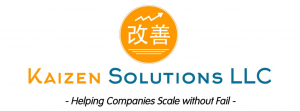The EOS Model® provides a useful foundation for businesses, but it falls short in addressing key aspects of creating an growth. By incorporating additional elements from the Gravitas 7 Attributes of Agile Growth® model, businesses can create a more comprehensive system that promotes growth while maintaining smooth operations. Focusing on Leadership, Strategy, Execution, Customer, Profit, Systems, and Talent, the 7 Attributes of Agile Growth® offer a more encompassing approach to achieving success.

The War for Talent: 5 Ways to Attract the Best Employees
In today’s competitive job market, attracting top talent is crucial. Here are five strategies for enhancing your hiring process:
- value creation,
- core customer,
- brand promise,
- value delivery, and
- spreading the word.
Value Creation: Why Should I Work for You?
Clearly articulate your company’s mission and provide a compelling narrative that resonates with potential employees. Emphasize stories of career progression, exciting projects, and a supportive work environment. Ensure your entire organization understands and communicates the mission consistently. A well-defined mission helps to attract and retain employees who identify with your purpose.
Many CEOs and business owners struggle to provide a compelling answer to this question, often giving generic responses such as “We are a great company,” “We offer great opportunities,” or “This is an exciting place to work.” These answers fail to differentiate them from competitors who likely provide similar responses.
To attract top talent, CEOs should prepare a detailed and unique response that resonates with the candidate, sharing stories that showcase growth opportunities, company culture, and the exciting aspects of working at the company. By clearly articulating why their organization is the best choice, they can stand out in the competitive job market and successfully recruit “A” players.
Core Customer: Identifying Your “Core Employee”
To attract the right employees, determine who your “core employee” is by focusing on shared values and company culture. Hiring for core values ensures long-term success since teaching skills is easier than changing someone’s values. Avoid relying solely on temp agencies, as they may not prioritize your company’s culture. Instead, focus on hiring candidates who align with your organization’s values and vision.
Brand Promise: Offer More Than Just a Salary
To stand out as an employer, offer more than just a competitive salary. Consider what benefits, career advancement opportunities, and development programs you can provide to your employees. Show that you care about their well-being and success by investing in their growth and creating a welcoming environment. Innovative initiatives, such as helping new employees achieve a goal from their bucket list, can foster loyalty and commitment.
Value Delivery: Measure Employee Satisfaction
Utilize tools like NPS scores and Gallup’s Q12 Employee Engagement Survey to gauge employee satisfaction and engagement. Share positive results and employee testimonials to showcase your company’s commitment to its workforce. Regularly monitor employee satisfaction to identify areas for improvement and maintain a high level of engagement. Satisfied employees are more likely to refer potential candidates, further enhancing your talent pool.
Spread the Word: Showcase Your Company on Your Website
Your website should have a dedicated section for employment opportunities outlining your mission, core values, brand promise, value delivery metrics, employee testimonials, and available job openings. This information helps attract top talent and positions your company as an employer of choice. Update your website regularly with new job openings and success stories. A comprehensive and engaging employment section can make a strong impression on potential candidates.
By implementing these five strategies, you can improve your hiring process and increase your chances of attracting and retaining top talent in today’s War for Talent.
Copyright (c) 2021, Marc A. Borrelli
Recent Posts
EOS is just that, an Operating System
What has COVID done to Company Culture?
COVID has affected everyone. However, companies need to examine if they have lived their core values during COVID, how they are reinforcing them in a WFH environment, and especially with the onboarding of new hires.
Profit ≠ Cash Flow
Knowing how much cash you generate is essential for planning for growth. Too many companies don’t know and when they grow they find they are continually running out of cash. Understand your cash flow generation and how to improve it through improvements in your Cash Conversion Cycle and using the Power of One.
What Are Your Critical and Counter Critical Numbers?
The key to achieving long term goals is to define short term goals that lead you there. Focusing those short term goals around a key metric is essential. However, ensure that the metric will not lead other areas astray by having an appropriate counter critical metric act as a counter balance.
Rethinking ‘Family’ Culture in Business: Fostering Performance and Success
Explore the importance of company culture and the potential pitfalls of adopting a “Family” culture in organizations. Learn how to foster a high-performance culture while maintaining key family values and discover success factors for family businesses. Rethink the “Family” culture concept and create a thriving environment for your organization.
Do You Truly Know Your Core Customer?
Knowing the profit of your core customers is key to building a growth model. Many companies have identified core customers that are generating a sub-optimal profit and so they cannot realize the profits they seek. Identifying the correct core customer allows you to generate profits and often operate in “Blue Ocean.”
The Spectacular Rise and Fall of the European Super League
The European Super League (ESL) collapsed within 48 hours of its announcement due to hubris, a lack of value creation, and fan backlash. The founders’ arrogance led them to disregard European football’s deep-rooted traditions and culture. At the same time, the focus on wealthy club owners instead of merit undermined the essence of the competition. The fierce backlash from fans, who felt betrayed by their clubs, demonstrated the importance of prioritizing supporters’ interests in football.
When Should I Sell My Business?
Many business owners want to sell at the top of the market. However, market timing is tough. Is this the best strategy? Probably not.
Does Your Financial Model Drive Growth?
Working with many companies looking to grow, I am always surprised how many have not built a financial model that drives growth. I have mentioned before a financial model that drives growth? Here I am basing on Jim Collin's Profit/X, which he laid out in Good to...
COVID = Caught Inside
As we emerge from COVID, the current employment environment makes me think of a surfing concept: “Being Caught Inside When a Big Set Comes Through.” Basically, the phrase refers to when you paddle like crazy to escape the crash of one wave, only to find that the next wave in the set is even bigger—and you’re exhausted. 2020 was the first wave, leaving us tired and low. But looking forward, there are major challenges looming on the horizon as business picks up in 2021. You are already asking a lot of your employees, who are working flat out and dealing with stress until you are able to hire more. But everyone is looking for employees right now, and hiring and retention for your organization is growing more difficult.















